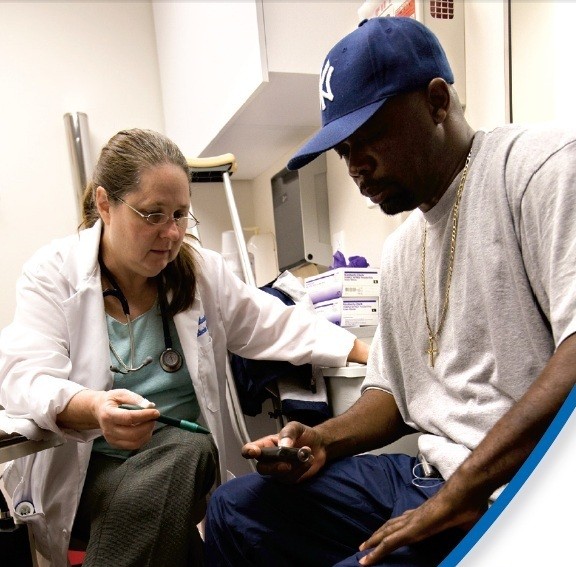
Curely Gilmore knows about complications. In the past seven years, he’s had six major surgeries. First he lost his gallbladder, then his right toe, then his left leg…and the list goes on. The retired construction worker was diagnosed with type 1 diabetes at age 14, but his real troubles started when he turned 40.
Older people with diabetes often find themselves juggling more then one health problem at a time. Poor circulation in the feet lends itself to bacterial and fungal infections, and complications such as heart and kidney disease shorten the lifespans of people with diabetes by about 15 years.
But perhaps one of the most feared complication is diabetic retinopathy, a gradual deterioration of the eye’s inner camera that can ultimately lead to blindness. About 3.2 million Americans with diabetes reported some form of visual impairment in 2005, according to the Centers for Disease Control and Prevention. Gilmore was one of them. Now, 46, he has been battling diabetic retinopathy since he was in his 30s.
UF Diabetes Institute affiliate investigator William Hauswirth, Ph.D., is a pioneer in the quest to reverse this debilitating condition: In the 1970s, he and his UF colleagues engineered a virus capable of deliverying corrective genes into human cells.
By 2001, Hauswirth’s team had used gene therapy to cure blindness in a dog that had been born without sight. The dog, a Bernard named Lancelot, had a genetic condition called Leber cogenital amaurosis, a disease that affects a gene neccessary for sight and leaves photoreceptor cells in the eye unable to resond to light.
In 2007, UF and University of Pennsylvania researchers tested this therapy in humans. A young adult with a disease similar to Lancelot’s, called Leber congential amaurosis type 2, was given an injection to replace the faulty gene with a healthy one.
Although these groundbreaking studies don’t involve diabetes-related blindness, they put researchers one giant step closer to finding similar ways to spare sight in patients.
UF has come a long way in the fight to uphold a unifying vision for people with diabetes: a life without complications.

